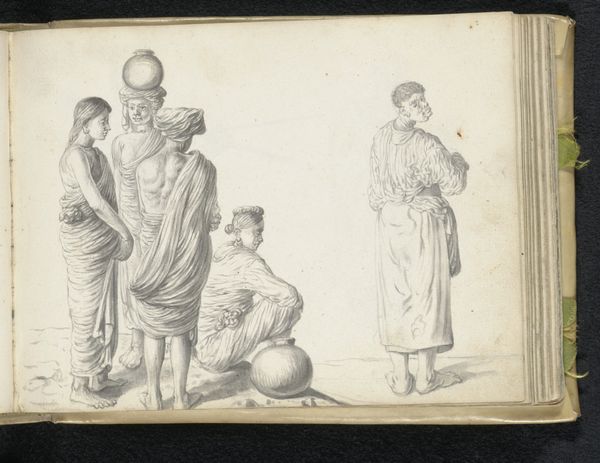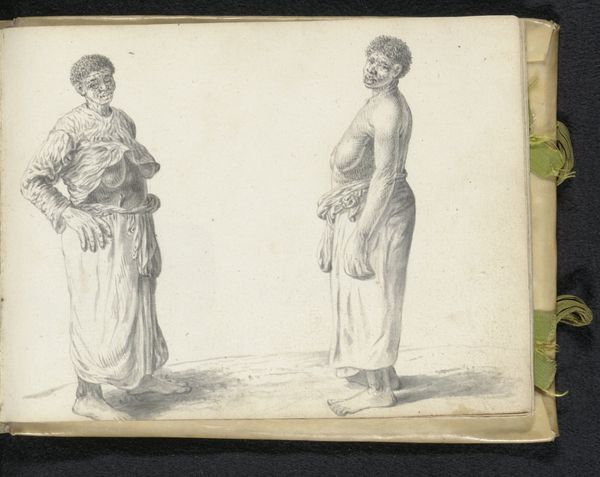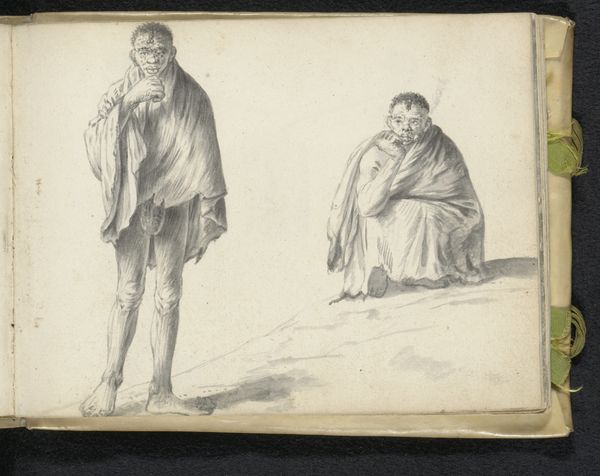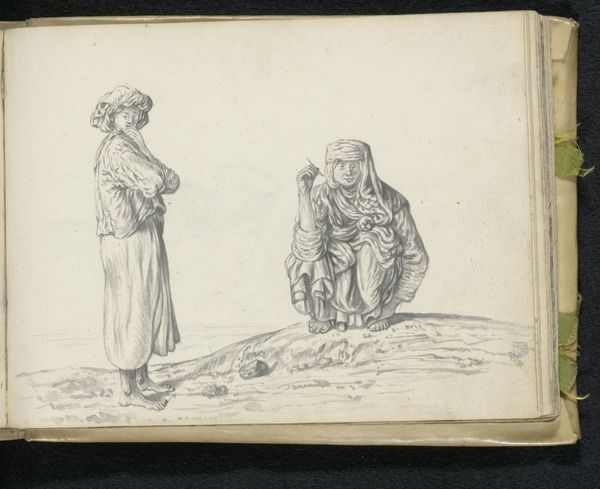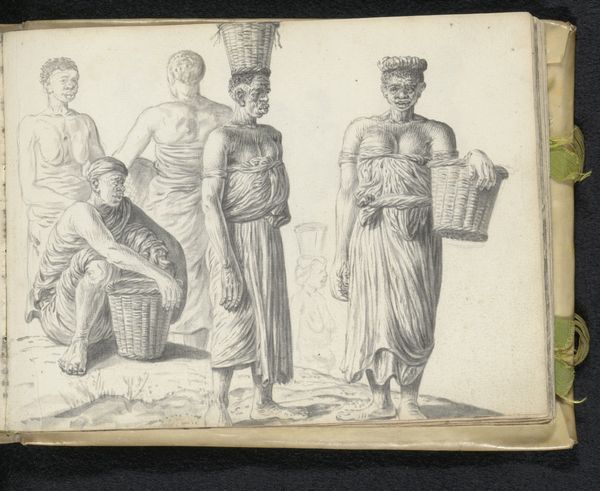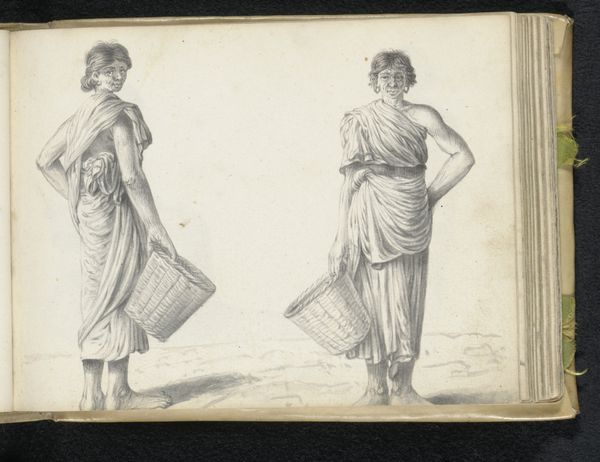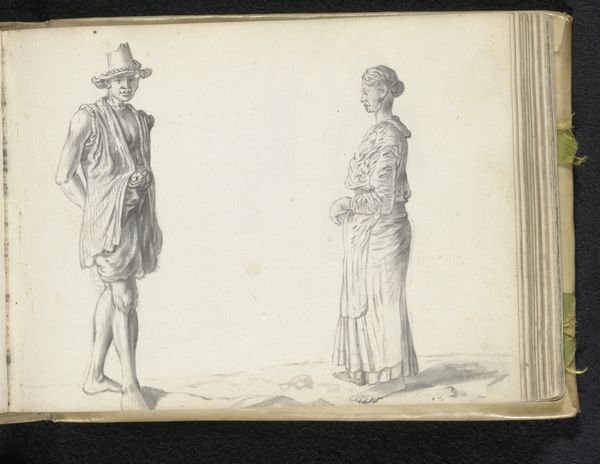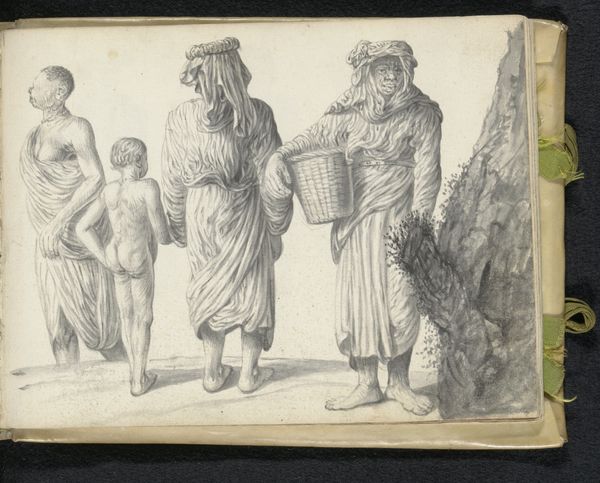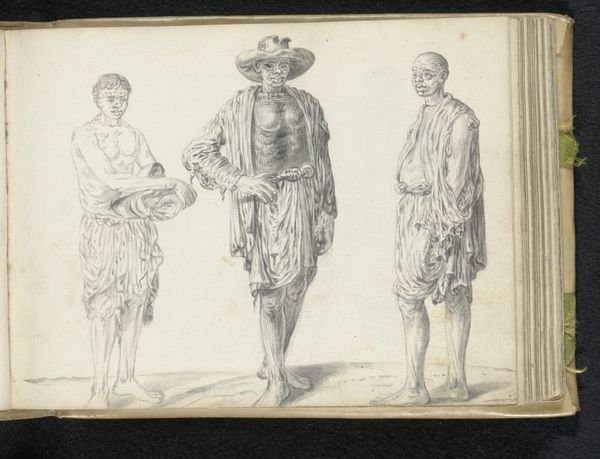
drawing, paper, pencil
#
portrait
#
drawing
#
baroque
#
figuration
#
paper
#
pencil
#
genre-painting
Dimensions: height 148 mm, width 196 mm
Copyright: Rijks Museum: Open Domain
Editor: This pencil drawing, "Three Sinhalese Women," created in 1662 by Esaias Boursse, immediately strikes me with its study of form and the artist's attention to draping fabric. What aspects of this drawing capture your attention? Curator: Indeed, the artist demonstrates great skill in rendering the texture and weight of the garments, doesn't he? Note the artist’s choice to present the three figures in distinct poses within a single frame. Consider the leftmost figure: the cascading fabric folds not only define the form but create an intriguing pattern across the surface. Do you perceive a conscious structure in the arrangement of these figures? Editor: Now that you mention it, I see the contrasting verticality of the standing figures against the seated one creating a certain rhythm across the composition. It leads the eye. What about the use of light and shadow here? Curator: Observe how the starkness of the light models the drapery. The artist skillfully uses shadow to define depth and volume. Take for example the shadows on the seated figure's garment and the contrasting lightness of the standing figure in the middle. How might you analyze the relation of line and form in this Baroque drawing? Editor: It’s fascinating how the detailed line work brings a sense of volume, but it also creates such a rich textural effect. Thank you for pointing out these formal aspects of Boursse's technique. I see so much more in it now. Curator: Precisely. It is through such observations that the artist's intentionality and formal brilliance reveal themselves.
Comments
No comments
Be the first to comment and join the conversation on the ultimate creative platform.


